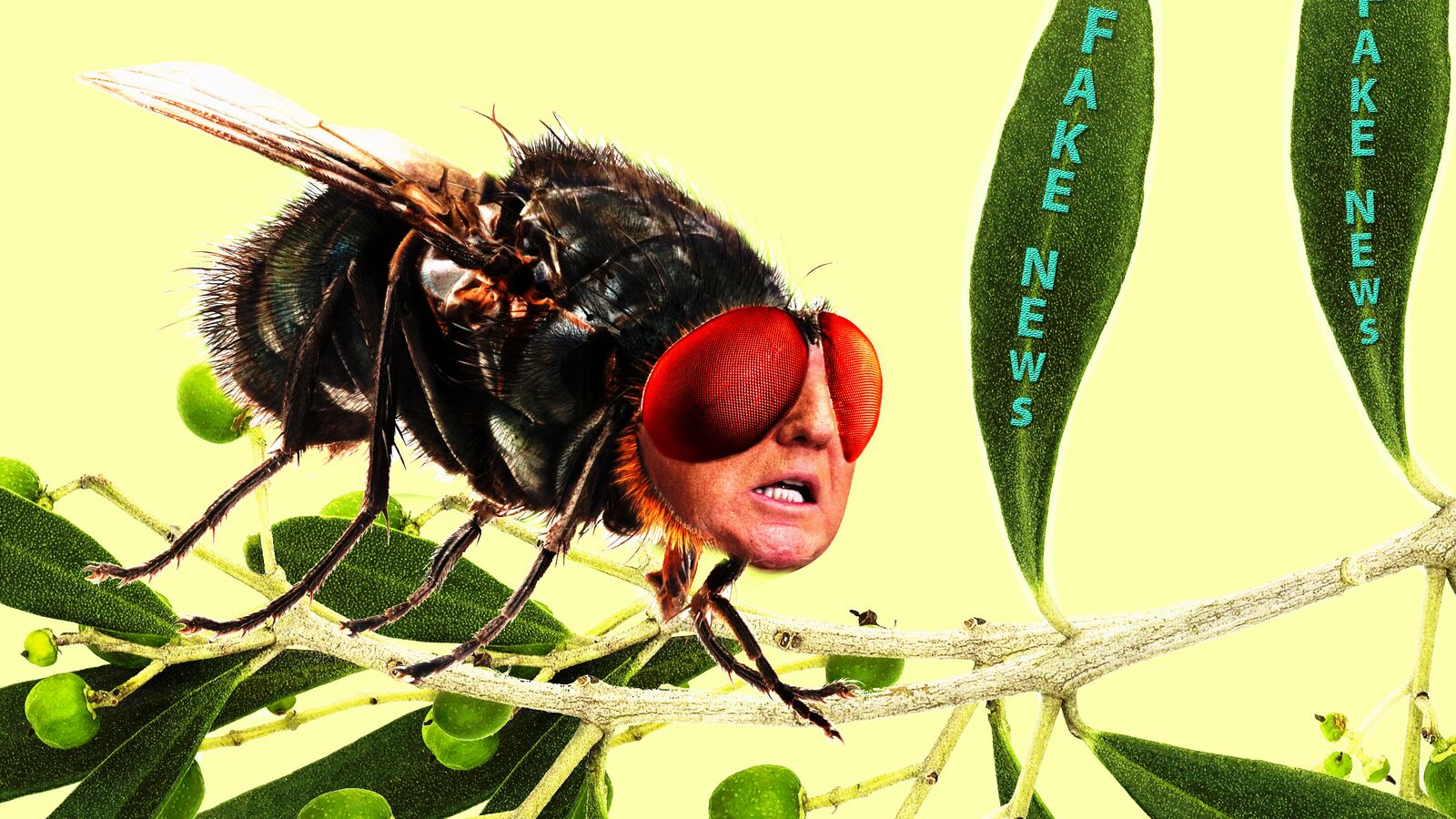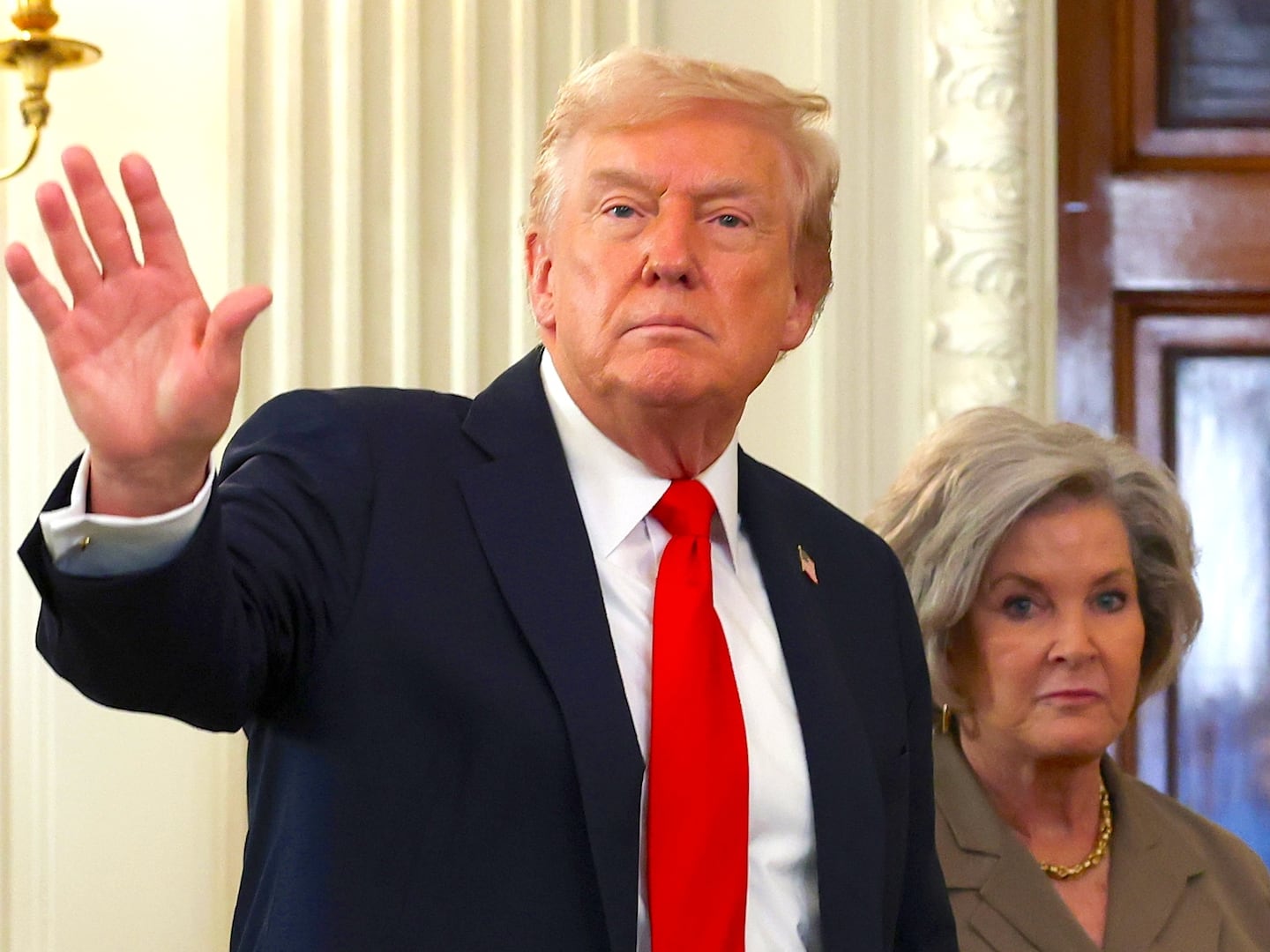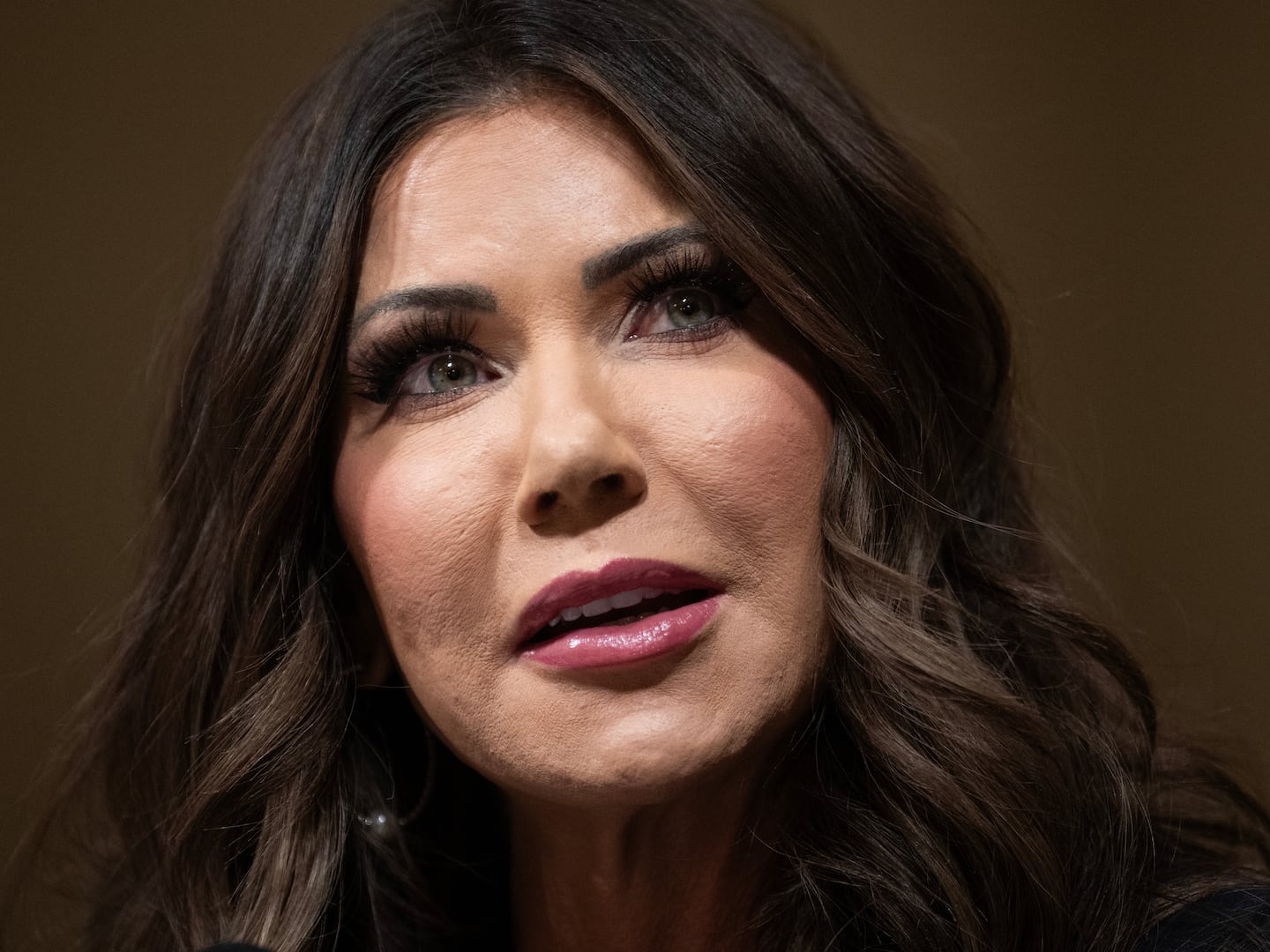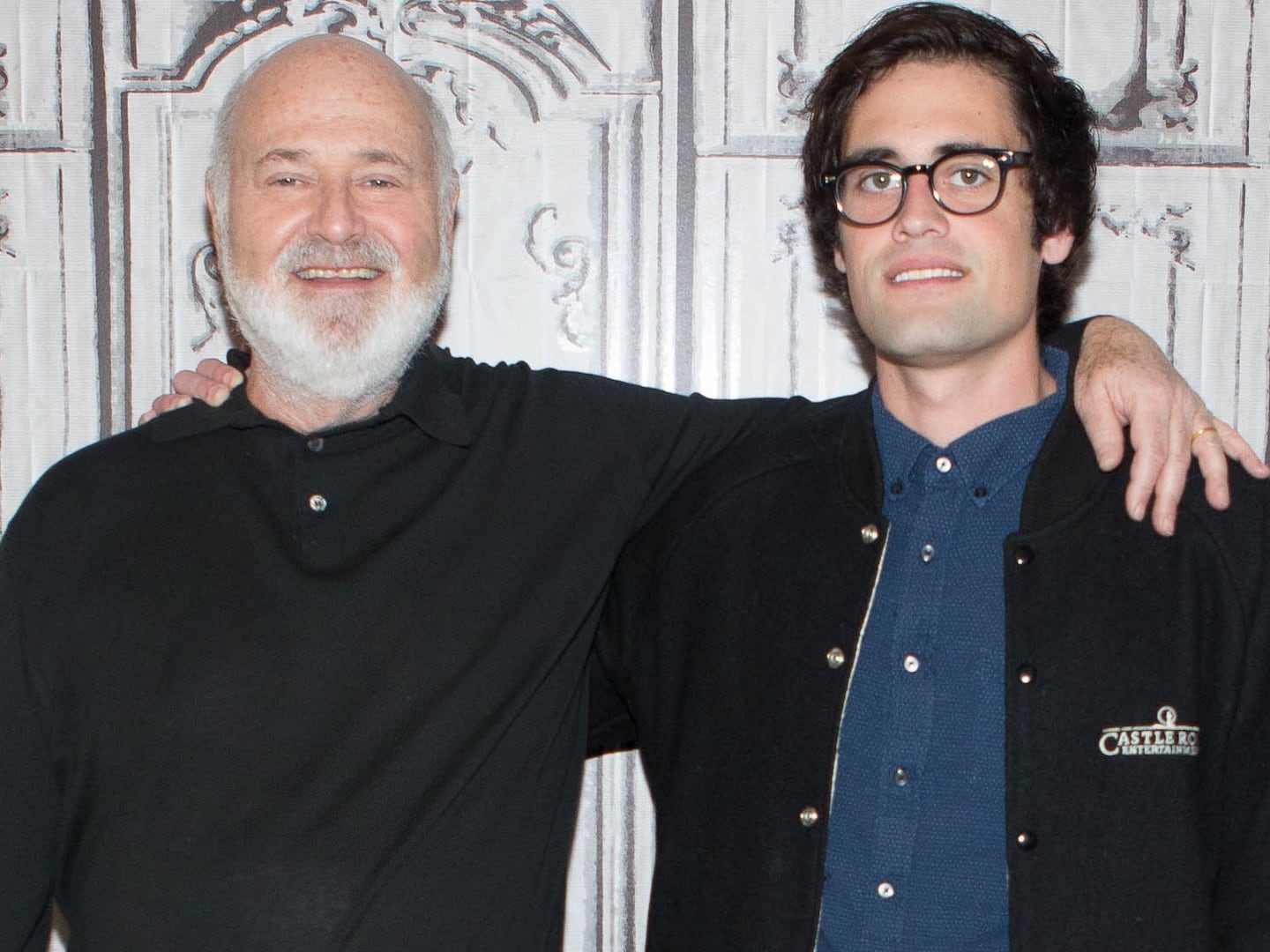Donald Trump’s first year in office is drawing to a close, but his war on the media is not. It’s tempting to think we’ve been here before. Every president has considered himself the victim of skewed reporting and baseless slanders, and more than a few distrusted, denounced, and despised the press corps. In fact, most other presidents—including Barack Obama for his liberal Espionage Act prosecutions, and George W. Bush for his White House’s rigid message control—have been described at some point as the worst ever in their treatment of reporters. But none of Trump’s predecessors ever made flaying journalists a full-time public pursuit. None had Trump’s preternatural shamelessness—his disregard for the norms of civility or the satisfactions of respectability—that has allowed him to behave as president in hitherto unthinkable ways.
But it’s not just Trump’s character that has led millions to cheer on his blasts and has allowed scurrilous charges of “fake news” to resonate. The president’s sallies at the press find support—at least with the large minority of Americans who applaud them—only because long-term developments over the last half-century have destabilized the practices and institutions of journalism as we once knew it. Those developments, as much as Trump’s personality, bear attending to.
Trump’s psychological profile is, no doubt, the key ingredient in his hostile relations with the media. He rose improbably to the pinnacle of power by trusting his belligerent and ultra-competitive instincts. His seat-of-the-pants 2016 campaign taught him that lashing out impulsively at journalists and media figures—collectively and individually—rarely hurt him. To the contrary, it thrilled his base, enhanced his anti-establishment bona fides, and propelled his candidacy. Thin-skinned and bent on vanquishing all critics, unable to distinguish routine reporting from personal attacks, Trump is constitutionally incapable of ignoring the Fourth Estate. Even as he thrives on publicity and delights in the parade of big-league reporters who giddily bound after his every tweet, combat with the press corps has become the oxygen of his presidency.
So common have his broadsides against journalists become that even the crudest ones no longer shock. Since becoming president, Trump has called the press corps “an enemy of the people,” as well as “sick people” who “don’t like our country,” and, most recently, “a stain on America.” He targets individual journalists by name, in public, in ways that not even Richard Nixon did. Lately he’s trained his fire on The Washington Post’s Dave Weigel, ABC News’ Brian Ross, and morning talk-show host Joe Scarborough, as well as familiar targets like CNN, The New York Times, and other organizations.
But the name-calling, while unbefitting a president and perhaps intimidating to journalists plying their trade, is hardly the worst of it. It pales next to his drumbeat of accusations that reporters are inventing facts to hurt him. “Fake news” went from being a label for Daily Show-style satire to a name for bogus stories crafted for political or financial gain to an epithet that Trump bestows to seed doubt among his loyalists. Trump applies the term equally to stories that contain innocent mistakes and those that are completely true. Whether he delusionally believes his own tirades or just cynically spouts them doesn’t matter. Trusted by a large, devoted following, he validates his supporters’ hatred of the mainstream media by insisting that their errors or criticisms—or even just dispatches of events that reflect badly on Trump—add up to not bias, not sloppiness, but fabrication and deceit.
With his cries of “fake news,” as in other ways, Trump has taken a longstanding conflict between press and president to a new level. But he’s also reaping what two generations of conservative activists have sown. For a half century, they have tried—and have now largely succeeded—in depicting the mainstream, aspirationally objective media as irredeemably biased. The roots lie in the ’60s, when Southerners seethed at the national media’s reporting on the civil rights movement—one of the first major stories in American public life that unfolded on the nightly news—and argued that a liberal slant distorted the news networks and pace-setting newspapers and magazines. Politicians like George Wallace and Jesse Helms (then a commentator on North Carolina television) turned the so-called liberal media into an arch-villain in conservative demonology. By the decade’s end Richard Nixon, Trump’s only real rival as a presidential scourge of the press, was propounding the idea of liberal media bias from the White House pulpit. He dispatched his vice president, Spiro Agnew, to lacerate the press in a pair of high-profile speeches and used presidential resources to promote Edith Efron’s The News Twisters, the first bestseller to advance this claim.
By the ’90s and early 2000s, with the flourishing of openly right-wing broadcast media—first the talk-radio shows like Rush Limbaugh’s, then Fox News, and finally websites like Breitbart—it had become an article of faith that the aspirationally objective media were hopelessly biased. Over time, as the conservative broadcaster Charlie Sykes has explained, these outlets taught many followers to utterly disregard mainstream news, even basic factual information. Into the void came the “conspiracy theorists who indulged fantasies of Mr. Obama’s secret Muslim plot to subvert Christendom, or who peddled baseless tales of Mrs. Clinton’s murder victims,” Sykes wrote. While endorsing such fantasies, conservative spokesmen deemed mainstream news to be fake—as Trump himself does, too.
As the conservative vilification of the media bred a culture of suspicion on the right, the media themselves became their enemies’ unwitting partners. Though American journalism has always boasted legions of heroic reporters and fair and able analysts, the business itself moved aggressively in the post-’60s era into the world of opinion, analysis, and context. Interpreting the news had always been crucial to journalism’s mission, but now what reporters made of the facts often eclipsed the facts that they reported. More and more, front pages highlighted not straight news but analyses and features with a strong authorial voice. TV news segments stressed the correspondent’s take over those of the sources, who were confined to shrinking sound bites. Starting in the ’90s, cable news created an unquenchable thirst for punditry. The tossed-off opinions of professional gabbers, and not the venerable gray rows of type, came to form the public’s picture of what was now routinely called not “the press” but “the media.”
In theory, this shift should have encouraged the flourishing of democratic debate. And at its best, the ample opinionating exposed audiences to stimulating arguments and exchanges. Overall, however, television debates frequently turned out to be superficial, sensationalistic, and dominated by hired hacks. The resulting cacophony eroded the reputation of journalists as disinterested truth-tellers. Increasingly, workaday reporters get sucked in. Today, ostensibly neutral scribes give Trump no greater gift than when they snarkily mock him on Twitter, casually ascribe motives to him while on the cable talk shows, or take gratuitous swipes in analytical articles. When a purportedly dispassionate New York Times article on the tax bill’s winners and losers cites Trump and his family first among the winners, you don’t have to be a fan of the president to see partiality at work.
Contributing, too, to the media’s current credibility crisis has been another long-term shift in Washington journalism—the trend toward confrontation. After Vietnam and Watergate, journalists shed their former deference to authority (though it might return in times of war or crisis) and assumed a more consistently adversarial stance toward the president and other powerbrokers. That Democratic presidents as much as Republicans have endured batterings by the press—was any recent White House occupant flogged more relentlessly than Bill Clinton?—gives the lie to the right’s claim that liberal ideology fuels the press’ antagonisms.
This too, in theory, marked a positive development, even a sign of an invigorated Fourth Estate—if the adversarial spirit were channeled into investigative reporting or skepticism of official decrees. But too often the television stars, the talking heads, and the marquee correspondents succumbed to herd thinking. They wallowed in scandal, joined in feeding frenzies, and indulged in snide and petty gotcha journalism, staining their collective reputation. To be sure, some reporters have done bang-up work investigating the Trump administration. But even reporting on the president that exposes dishonesty or wrongdoing is going to be read by many as a smear—more proof of the media’s desire to get him. Trump has to a large extent inoculated himself.
The final long-term change in Medialand that plays to Trump’s advantage has been the rise of the internet and in particular social media. Partisan outlets fed the polarization of political opinion: developing partisan talking points, ginning up outrage, reinforcing ideological assumptions, promoting maximalism. With email, then Facebook, then especially Twitter, this partisan outrage could be widely shared and sustained around the clock. Even print media adapted to the new metabolism; reporters now take cues about what to write about from what’s trending online and have learned to post and update stories continuously. Did we really need the hundred quick takes posted last Monday about whether Oprah should run for president?
It was Trump’s inadvertent genius to stumble upon this strange new medium for political gain. Twitter’s value to him is not, as is commonly supposed, that it lets him reach a huge audience directly; presidents have done that for decades with radio, TV, and even press releases. Twitter suits Trump because it lends itself to short unreflective outbursts, packed with anger and emotion, usually aimed at assailing somebody else in juvenile, mean-spirited terms. This denigrative approach has long been Trump’s modus operandi. Twitter provided a perfect outlet for it in a season of resentment and frustration.
Whether Trump exits the scene in 2020, 2024, or perhaps some time before then, his departure will bring many sighs of relief. But it’s unlikely to restore the relatively peaceable relations that, we can only now see, prevailed under Obama and others who came before. The conditions that corroded popular regard for the national news media remain firmly in place, and the methods that Trump devised, however impulsively or intuitively, will be there for the taking for the next angry demagogue to exploit.






